- Total Pharmacy® August 2025
- Volume 03
- Issue 04
Rethinking Medication Adherence: Patient-Centered Solutions for Better Outcomes
Pharmacists are tackling persistent medication nonadherence by using technology and community support to address barriers.
To reduce the alarming percentage of patients who fail to take their medication correctly, pharmacists are turning to personalized patient-centered care and connecting patients with peers and community-based organizations for help. Newer technologies such as smartphone apps and artificial intelligence (AI) are also being embraced to flag nonadherence and provide intervention.
“Patient medication nonadherence is a huge public health problem that has not gone away,” said Olayinka Shiyanbola, PhD, BPharm, a professor at the College of Pharmacy at the University of Michigan in Ann Arbor. “There is evidence that shows 50% of patients still do not take their medicines in the manner prescribed by their health care provider and prescriber.1 And as far as I know, [those] data [have] not changed.”
Patients with chronic conditions such as diabetes, heart disease, and cancer are at especially high risk of failing to improve their outcomes by not taking their medication.
Shiyanbola said there are intentional and unintentional reasons why patients do not take their medication. “Unintentional means they just forgot,” she said. “This is commonly seen in older adults, [who are] a growing segment of the population in the United States.”
READ MORE:
Tools to remind patients to take their medications2 include reminder apps that can be downloaded on a smartphone or another device, pill boxes that provide visual cues and audible alarms, and smart pill dispensers. Patients can also simply set an alarm on a phone or use a pill organizer with compartments for each day of the week.
One of the most common intentional reasons for not taking medication is that the patient does not believe there will be a positive benefit, according to Shiyanbola. Potential adverse effects of medication also contribute to lower adherence rates, as patients believe they will become dependent on the medicine and have concerns about the long-term effects of taking it, especially for chronic conditions.
“Medication adherence would increase if more patients understood their disease, which is a health literacy issue,” Shiyanbola said. “There is a lot of misinformation and a lot of misunderstanding by patients about their disease. They don’t understand the cause and the consequences. If you don’t understand your disease, you also don’t understand why your prescriber is giving you that medication to take.”
Medication adherence rates could increase dramatically if pharmacists incorporated personalized patient-centered care into their practice, according to Shiyanbola. “We could tailor education specifically to the patient’s beliefs,” she said. “We want to understand what the patient perceives about the medicines prescribed.”
While motivational interviewing is key, there are often social and structural barriers preventing medication adherence. For example, the patient may lack transportation to pick up medication or cannot afford it.
“In these cases, pharmacists can intervene by connecting the patient with peers and community-based organizations with community health care workers,” Shiyanbola said. “There is also the opportunity for pharmacists to provide support to patients who are having challenges with their medications for various reasons, especially for populations who are experiencing disproportionate care, including lower-income individuals and those with low literacy.”
In addition, pharmacists can collaborate with other care teams within hospitals and clinics, such as nutritionists and diabetes educators, to provide therapy management that can bolster medication adherence. Using telehealth for patients with transportation hurdles is also helpful.3
Charles Bedel, PharmD, RPh, a staff pharmacist at a community hospital in Cincinnati, Ohio, said that although medication adherence continues to be a challenge, the reasons expand beyond cost and forgetfulness.
“Today’s health care system drops patients into a maze and then blames them for getting lost,” Bedel said. “Dead ends appear at every turn: prior authorizations stuck in fax loops or patients arriving at the pharmacy only to discover their medication is out of stock, for example.”
In June, 19 of 20 patient admissions that Bedel processed showed medication gaps due to access challenges, such as a lack of transportation or stretching 30-day supplies over 60 days to manage costs.
“Claims data and patient interviews during medication reconciliation consistently reveal that many prescriptions never reach patients or are taken intermittently due to these types of systemic barriers,” he said.
Bedel believes that the game changer for adherence will be technologies that eliminate the obstacles between writing a prescription and the patient receiving their medication. “It may seem simple: The doctor sends a prescription, the pharmacy fills it, and the patient begins therapy,” he said. “However, patients are plunged into chaos and inefficiency that grind everything and everyone down.”
Many variables complicate this process, including prior authorization requirements, medication shortages, and variations in covered quantities, according to Bedel, who is also director of product management at DrFirst, an Arlington, Virginia–based firm that helps providers and patients achieve better health through intelligent medication management. “If a prescription isn’t ready to fill upon receipt, patients are left without vital care,” he said.
Improving adherence hinges on instantly and automatically connecting all stakeholders with needed information and dramatically transforming patient access and outcomes. “However, state and federal regulations have inadvertently fostered continued information siloing, preventing the open collaboration essential for pharmacy practice to reach its full potential,” Bedel said.
Moreover, limited reimbursement models keep pharmacists as an underused resource.
“Advancements in prescription technology are poised to change that by ensuring prescriptions arrive at pharmacies complete and ready to fill,” Bedel said. “Instead of chasing down information for prior authorizations or playing phone tag with doctors when prescriptions need revisions to be covered by insurance, pharmacists gain the time to practice at the top of their license. That’s why many of us, including me, became pharmacists.”
Bedel said among the ways pharmacists have improved medication adherence and achieved better outcomes are by consulting with patients on their entire medication regimen, syncing up fill schedules, and managing health conditions such as diabetes and cardiovascular conditions.
The cost of medication nonadherence in the United States is estimated to be anywhere from $100 billion to $500 billion annually.1
“Increasing medication adherence is a viable strategy to not only decrease [the] total cost of health care, but to ensure optimal therapeutic benefits that will improve patient health outcomes,” said Andrew Maiorini, PharmD, vice president of clinical programs at PerformRx, a pharmacy benefit manager company based in Philadelphia, Pennsylvania. “But as medication regimens become more complex and expensive, the risk for nonadherence may increase.”
In recent years, pharmacists, providers, and payers have placed an increasing emphasis and visibility on messaging patients about medication adherence.
“However, overall adherence rates have not changed significantly in recent years, showing there is important work to do around improving the effectiveness of that messaging,” Maiorini said. “Strengthening efforts to impact social determinants of health factors is also key to increasing adherence rates.”
Maiorini said data monitoring is essential to track adherence rates and identify issues for all entities involved in helping people be healthy, including government regulators and accreditation bodies.
“More advanced analysis using AI4 will help spot nonadherence risks, allowing us to proactively reach out and intervene before a problem arises,” he said. “We can also use AI to develop even more impactful interventions tailored to the needs of each individual patient. And tools, [such as] smartphone applications, can be part of those interventions as mechanisms for patients to receive reminders, record their reactions, message with pharmacists, and more.”
Maiorini hopes that ever-improving technology will provide a better overall patient experience and improved health outcomes, which will derive from increased medication adherence.
“Many pharmacists are on the front lines of being able to identify and address concerns that lead to reduced adherence rates,” he said. “Driven by greater data integration and more comprehensive programs to monitor for adherence, pharmacists will take on more proactive roles to transform chronic disease management and cost containment.”
Shiyanbola was the lead author of a feasibility pilot trial in Pilot and Feasibility Studies of a peer-support educational behavioral intervention to improve diabetes medication adherence in African Americans.5 “Results show there is [an] opportunity for pharmacists to talk about beliefs about medicines in educational programs for diabetes management,” she said.
In the pilot trial, most patients who self-reported poor diabetes medication adherence (buddies) and most patients who self-reported being adherent to diabetes medicines (ambassadors) were female, with an average age of 56 years.
Both buddies and ambassadors had excellent intervention adherence, with buddies having a mean attendance of 97% of sessions/phone calls and ambassadors completing more than 99% of the 105 intervention calls with buddies.
More importantly, though, there was a significant change in hemoglobin A1c levels and medication adherence among buddies, a reduction in buddies’ negative beliefs about diabetes, and an increase in necessity beliefs of diabetes medicines.
“Summative interviews with buddies showed they valued their ambassador’s encouragement of self-management behaviors,” Shiyanbola said.
Shiyanbola is also the lead author of a protocol in the journal Contemporary Clinical Trials for a randomized mixed-methods factorial trial to optimize diabetes management interventions for Black and Hispanic adults using the multiphase optimization strategy.6 The secondary outcome is medication adherence.
“Pharmacist-delivered medication therapy management improves clinical outcomes and medication adherence,” Shiyanbola said. “However, pharmacists have limited capacity to address other related barriers to medication adherence, such as social drivers of health, and disease and medication misperceptions; hence, [there is] a need for collaboration with community health care workers who do this well."
To read these stories and more,
References
1. Rose JZ. Contributor: medication adherence is not a zero-sum game. AJMC. April 5, 2022. https://www.ajmc.com/view/contributor-medication-adherence-is-not-a-zero-sum-game
2. Gualtieri L, Rosenbluth S. Can technology solve the problem of medication nonadherence? Mayo Clinical Proceedings: Digital Health. 2024;2(1):34-37. https://www.mcpdigitalhealth.org/article/S2949-7612(23)00099-8/fulltext
3. Kardas P. From non-adherence to adherence: can innovative solutions resolve a longstanding problem? Eur J Intern Med. 2024;119:6-12. doi:10.1016/j.ejim.2023.10.012
4. Worrall C, Shirley D, Bullard J, Dao A, Morrisette T. Impact of a clinical pharmacist-led, artificial intelligence-supported medication adherence program on medication adherence performance, chronic disease control measures, and cost savings. J Am Pharm Assoc. 2025;65(1):102271. doi:10.1016/j.japh.2024.102271
5. Shiyanbola OO, Maurer M, Mott M, et al. A feasibility pilot trial of a peer-support educational behavioral intervention to improve diabetes medication adherence in African Americans. Pilot Feasibility Stud. 2022;8(1):240. doi:10.1186/s40814-022-01198-7
6. Shiyanbola OO, Maurer MA, Piper ME, et al. Optimizing diabetes management interventions for Black and Hispanic adults using the multiphase optimization strategy: protocol for a randomized mixed methods factorial trial. Contemp Clin Trials. 2025:149:107804. doi:10.1016/j.cct.2024.107804
Articles in this issue
Newsletter
Pharmacy practice is always changing. Stay ahead of the curve with the Drug Topics newsletter and get the latest drug information, industry trends, and patient care tips.













































































































































